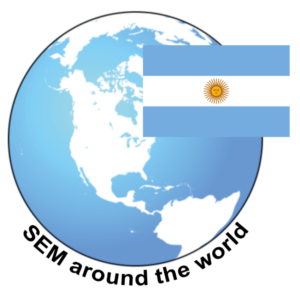We met Dr Rodrigo A. Martínez Stenger at the recent IOC Advanced Team Physician Course in Istanbul. We invited him to present his perspective on Sport & Exercise Medicine (SEM) in his home country, Argentina.
Tell us more about yourself
I am an orthopaedic surgeon working at the Hospital Zubizarreta (Buenos Aires). In addition, I have my private practice as a Sports Physician. I am also a doctor for the Argentinian female wheelchair basketball team, a co-founder and member of the executive board of AMDARG (Argentinian Sports Physicians Association) and a member of the World Skate Sports Medicine Commission (Switzerland, Lausanne).
I have always wanted to take care of athletes and was lucky enough to start on the pitch during the Evitaś National Games in 2016. In 2018, I acted as a staff orthopaedic surgeon at the Youth Olympic Games – Buenos Aires. One year later, I was asked to lead the medical operations in the framework of the XVIII Pan-American Games – Lima 2019. Finally, during the Covid 19 pandemic, I realized how sedentary behaviour affected athletes’ performance, which motivated me to write articles regarding safe return to physical activity following COVID-19 isolation (1-7).


What is the path to becoming a sport and exercise physician in Argentina, and what are the main hurdles on this path?
After the medical degree, there are different options to earn the Sports Medicine specialty and become a sports physician. The most recommended and prestigious Sports Medicine degree involves a two-year path at UBA (Buenos Aires University, click here). This is the home of the first Sports Medicine department in Argentina, led by Dr Luis V. Parrilla, who has more than 25 years of experience training Sports Physicians. The main objectives of this training are to train physicians in injury & illness prevention and to promote and encourage a healthy and physically active lifestyle.
This training includes classes at CeNARD (National Center for High-Performance Sports), where students might have contact with elite athletes. Indeed, most athletes train and get tested (strength, speed, coordination, balance, VO2max) in CeNARD.
There are 20-hour of classes per week during the entire training (45 weeks a year), divided into four modules: 1- introduction to sports medicine, 2- human performance, 3- physical activity in health & sports and 4- special situations/conditions. During the second year, students will carry out internships at various institutions, clubs, medical services and national or international competitions.
How developed is collaborative work in SEM in Argentina?
We do not have solid institutes which combine multidisciplinary work in amateur practice. CeNARD is the only place where you can find these collaborative interactions for high-performance athletes. Some National Federations aim to implement more interdisciplinary work, but they do not have enough financial resources to support it. Obviously, some sports, like soccer, do not have these financial issues. Indeed, most known soccer teams (e.g. River Plate & Boca Juniors) have a well-organized Sports Medicine Department.
Are exercise physiologists/scientists integrated into your healthcare system, and does health insurance cover their services?
These kinds of services are not included in our healthcare system. They are to be found in private clinics only. Amateur athletes are usually excluded from Sports Medicine Departments and do not have the same opportunities that high-performance athletes do.
What is done in Argentina to promote SEM among students and young professionals regarding research and clinical opportunities?
Almost all sports physicians are encouraging Argentinian Schools of Medicine to include SEM in their curricula. Medical students need to be taught topics such as healthy habits and exercise counselling. They should be familiar with the American College of Sports Medicine guidelines on physical activity for health. It’s a matter of public health.
Recently, the Covid 19 pandemic put topics such as sedentary lifestyles under the spotlight.
Sedentary behaviour is a real health problem in Argentina. In 2009, 54.9% of the population did not exercise, and 61.6% of the Argentinian population was overweight or obese. In 2018, Argentina still had the most sedentary behaviour in Latin America. However, in September 2021, the National Institute of Statistics and Census reported that sedentary behaviour is now decreasing for the first time. Unfortunately, noncommunicable diseases (NCDs) are still responsible for 73.4% of deaths in this country.
Finally, if you were Harry Potter, what would you change to SEM in Argentina?
I would surely let medical students know that there is a “magic pill” called exercise, which does not have any adverse effects and can be prescribed broadly to prevent and treat NCDs. Finally, I wish that the entire population could have access to SEM physicians to achieve the latter. Promoting and encouraging a healthy and physically active lifestyle is indeed our duty!
References
- Martínez Stenger RA, Parrilla LV, Quiroga F. Proposal for evaluation and registration of sport injuries in skateboarding. Professional skateboarding injury prevention survey. J Sports Med Phys Fitness. 2021;61(8):1125-31.
- Dr. Rodrigo Alonso Martínez Stenger, Dr. Luis Víctor Parrilla, Dr. Miguel Khoury. Cómo Evitar el Sedentarismo, la Inactividad y Limitar el Riesgo de Lesiones Frente al Retorno Deportivo. Rev Asoc Argent Traumatol Deporte. 2020.
- Luis Parrilla, Cecilia Penna, Rodrigo Martinez Stenger, Diego Rimmaudo, Miguel Resnik. Regreso a la actividad física post-aislamiento.2020. Available from: https://www.intramed.net/contenidover.asp?contenidoid=96927#.
- Parrilla LV, Penna C, Martínez Stenger R, Resnik M. EVALUACIONES Y RECOMENDACIONES EN EL REGRESO A LA PRÁCTICA RECREATIVA/DEPORTIVA EN LA POBLACIÓN ADULTA DURANTE LA PANDEMIA POR SARS-CoV-2. Asociación de Médicos Deportólogos de Argentina [Internet]. 2020.
- Actividad y ejercicio físico en contexto de pandemia. Asociación de Médicos Deportólogos de Argentina [Internet]. Available from: https://amdarg.org/wp-content/uploads/2020/11/Actividad-y-ejercicio-f%C3%ADsico-en-contexto-de-pandemia-COVID-19-PROFESIONALES.pdf.
- Protocolos COVID-19 para deportes individuales[Available from: https://www.argentina.gob.ar/turismoydeportes/protocolos-covid-19-para-deportes-individuales.
- [Available from: http://www.worldskate.org/about/documents.html.
